
Nagoya Station Area: The Heartbeat of Modern Nagoya
Discover the vibrant Nagoya Station Area, where modernity meets tradition in the heart of Nagoya, offering shopping, dining, and panoramic city views.
The Nagoya Station Area is a bustling urban center that serves as the gateway to the city of Nagoya, Japan. This vibrant neighborhood is anchored by the iconic Nagoya Station, one of the largest train stations in the world. A marvel of modern architecture, the station complex is a hive of activity, filled with shops, restaurants, and entertainment options that cater to both locals and tourists alike. The area surrounding the station offers a blend of traditional Japanese culture and cutting-edge modernity. Visitors can explore a plethora of shopping malls, each offering a unique selection of goods ranging from high-end fashion to local crafts. For food lovers, the station area is a culinary paradise, boasting an array of eateries that serve everything from traditional Japanese cuisine to international dishes. One of the highlights of this neighborhood is the Midland Square, a towering skyscraper that offers an observation deck with panoramic views of the city. Another must-visit is the JR Central Towers, which house luxury hotels, offices, and more shopping and dining options. The area is also well-connected, making it easy for tourists to explore other parts of Nagoya and beyond. Whether you are here for a short stopover or an extended stay, the Nagoya Station Area promises a dynamic and enriching experience.
Local tips in Nagoya Station Area
- Visit the observation deck at Midland Square for stunning views of the city, especially at sunset.
- Explore the underground malls directly connected to Nagoya Station for unique shopping and dining experiences.
- Consider staying at one of the luxury hotels in the JR Central Towers for convenient access to all the neighborhood's attractions.
- Use the efficient public transportation options available at Nagoya Station to easily reach other parts of the city.
Nagoya Station Area: The Heartbeat of Modern Nagoya
The Nagoya Station Area is a bustling urban center that serves as the gateway to the city of Nagoya, Japan. This vibrant neighborhood is anchored by the iconic Nagoya Station, one of the largest train stations in the world. A marvel of modern architecture, the station complex is a hive of activity, filled with shops, restaurants, and entertainment options that cater to both locals and tourists alike. The area surrounding the station offers a blend of traditional Japanese culture and cutting-edge modernity. Visitors can explore a plethora of shopping malls, each offering a unique selection of goods ranging from high-end fashion to local crafts. For food lovers, the station area is a culinary paradise, boasting an array of eateries that serve everything from traditional Japanese cuisine to international dishes. One of the highlights of this neighborhood is the Midland Square, a towering skyscraper that offers an observation deck with panoramic views of the city. Another must-visit is the JR Central Towers, which house luxury hotels, offices, and more shopping and dining options. The area is also well-connected, making it easy for tourists to explore other parts of Nagoya and beyond. Whether you are here for a short stopover or an extended stay, the Nagoya Station Area promises a dynamic and enriching experience.
Iconic landmarks you can’t miss
Nagoya Castle
Experience the grandeur of Nagoya Castle, a historic symbol of Japan's rich heritage and architectural beauty, nestled in the heart of Nagoya.
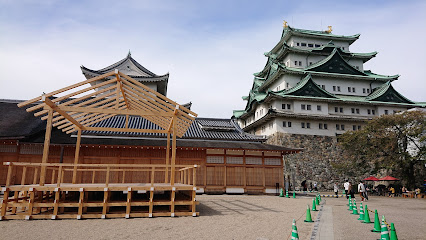
Chubu Electric Power MIRAI TOWER
Discover breathtaking views, delightful dining, and unique shopping at Chubu Electric Power MIRAI TOWER in Nagoya.
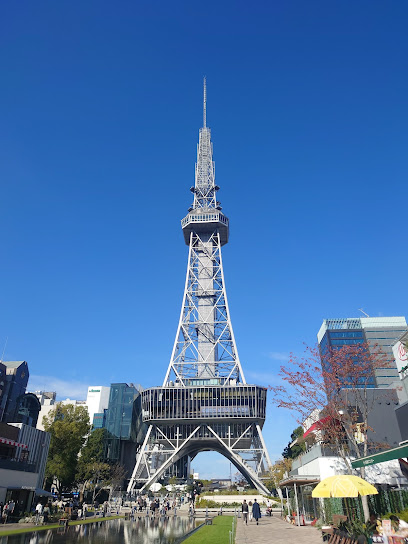
Nagoya Station
Explore the vibrant Nagoya Station, a bustling hub of travel, shopping, and dining in the heart of Japan's third-largest city.
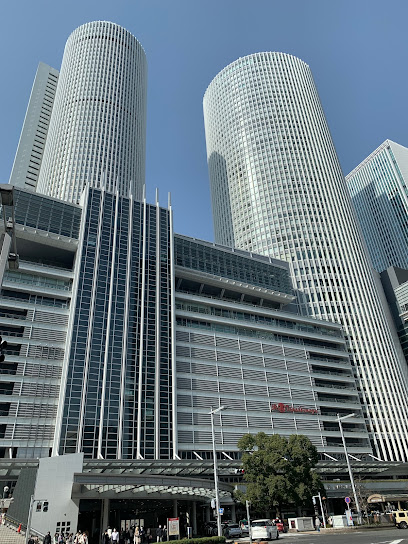
Honmaru Palace
Discover the beauty and history of Honmaru Palace, a serene historic landmark in Nagoya, showcasing Japan's imperial past through stunning architecture and gardens.
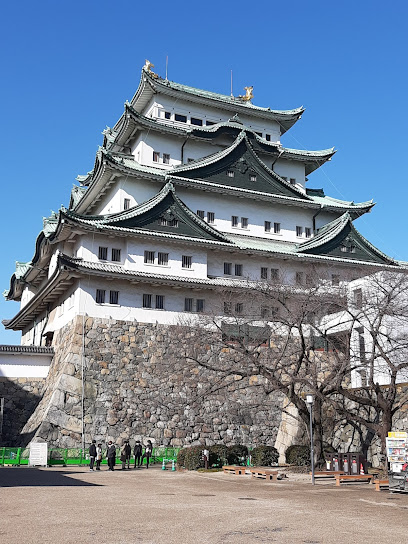
Kinshachi Yokocho
Experience the vibrant flavors of Nagoya at Kinshachi Yokocho, a must-visit culinary destination near Nagoya Castle.
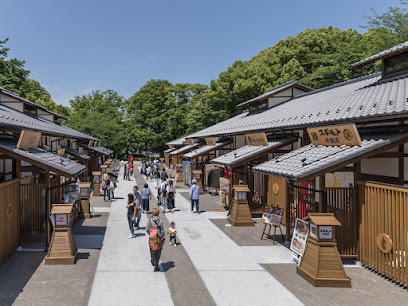
McDonald's JR Nagoya Station Branch
Experience the bustling atmosphere of JR Nagoya Station while enjoying classic fast food favorites at McDonald's, your convenient dining stop in Nagoya.
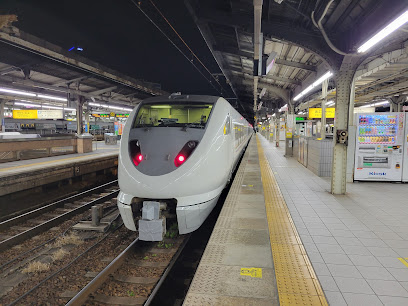
Nagoya Port Building
Discover breathtaking views of Nagoya Port from the iconic Nagoya Port Building observation deck, a must-see attraction for every traveler.
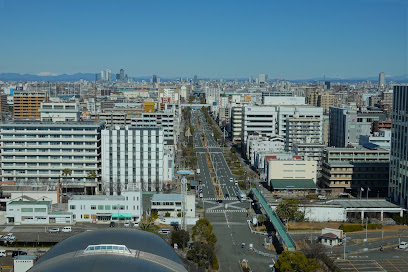
Kintetsu Nagoya Station
Discover the vibrant Kintetsu Nagoya Station, your gateway to exploring Nagoya's rich culture and scenic destinations across Japan.
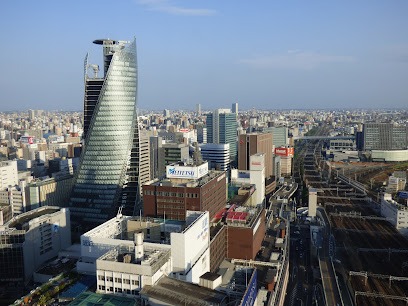
Meitetsu Nagoya Station
Discover the heart of Nagoya at Meitetsu Nagoya Station, your gateway to Aichi's rich cultural and historical attractions.
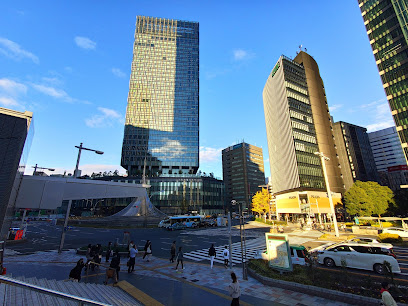
Toyoko Inn Nagoya Station Sakura-dori Entrance New Building
Discover comfort and convenience at Toyoko Inn Nagoya Station, the perfect base for exploring the vibrant culture and attractions of Nagoya.

Sotetsu Fresa Inn Nagoya Station Shinkansen Entrance
Stay at Sotetsu Fresa Inn Nagoya for unmatched comfort and convenience near Nagoya Station, your gateway to Japan's vibrant culture and attractions.
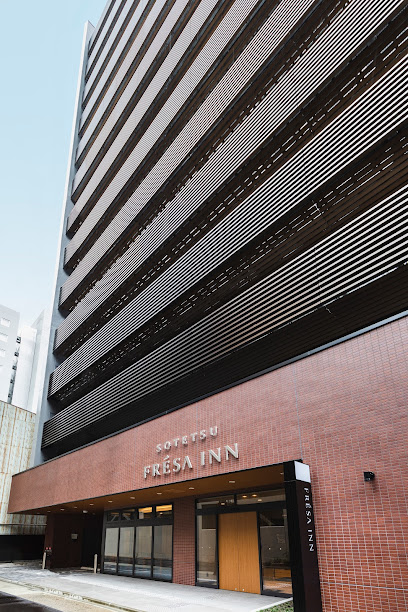
@Nagoya Monument
Explore the Nagoya Monument, a captivating tourist attraction showcasing the rich history and stunning architecture of Nagoya, Aichi.
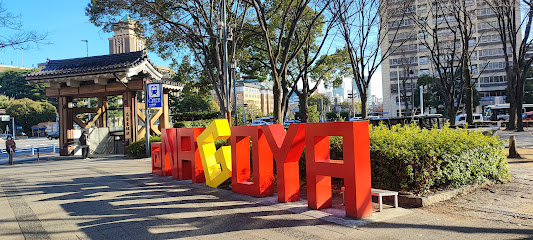
At Nagoya Monument Oasis 21
Explore Oasis 21 in Nagoya, a stunning urban landmark combining futuristic design with lush green spaces, shopping, and dining experiences.
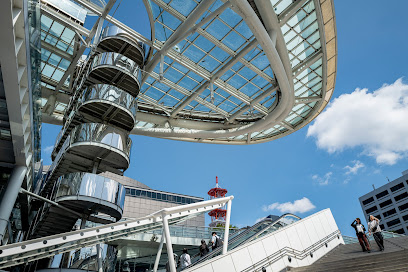
Nagoya Station Tourist Information Center
Explore Nagoya with ease at the Nagoya Station Tourist Information Center, your ultimate resource for local insights and travel tips.
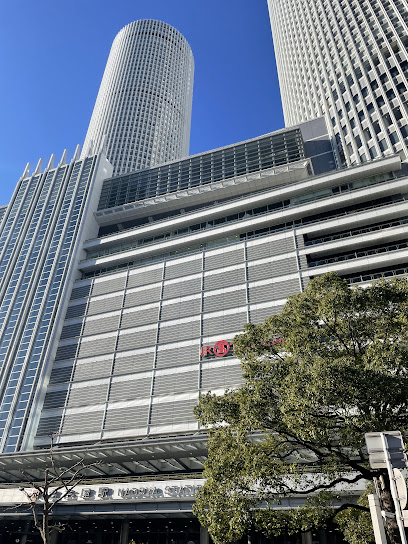
@Nagoya Monument
Explore the Nagoya Monument, a captivating symbol of Nagoya's maritime heritage, offering stunning views and cultural insights along the picturesque waterfront.

Unmissable attractions to see
Nagoya Castle
Explore the historical beauty of Nagoya Castle, a stunning architectural marvel and a symbol of Japan's rich cultural heritage.
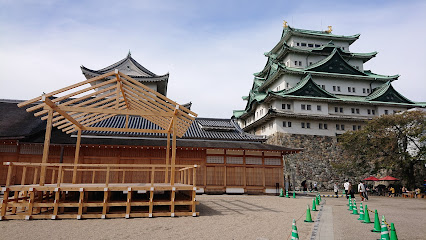
Atsuta-jingu Shrine
Explore the serene beauty and cultural significance of Atsuta-jingu Shrine, a must-visit Shinto destination in Nagoya, Japan.
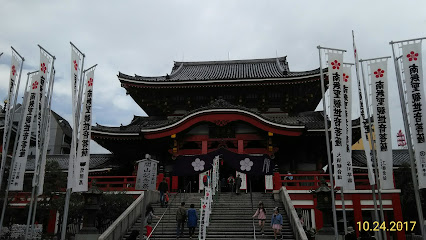
Port Of Nagoya Public Aquarium
Explore the enchanting marine life at Port of Nagoya Public Aquarium, where education meets entertainment in an unforgettable aquatic adventure.

Toyota Commemorative Museum of Industry and Technology
Explore Japan's technological heritage at the Toyota Commemorative Museum of Industry and Technology, a hub of innovation and history in Nagoya.
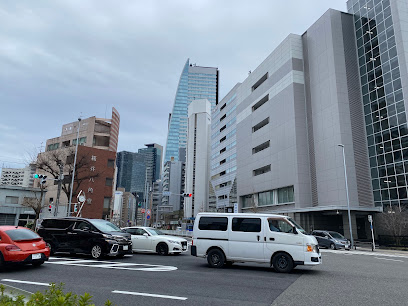
Legoland Japan Resort
Discover the magic of building and adventure at Legoland Japan Resort, a family-friendly theme park filled with fun attractions and creative experiences.

Noritake Garden
Discover the beauty of Noritake Garden in Nagoya, a tranquil oasis of nature and exquisite porcelain artistry in Japan.
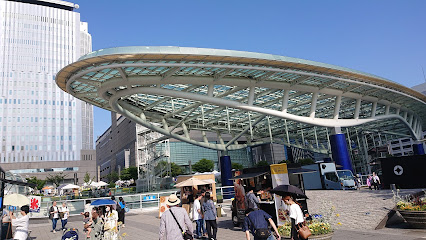
Chubu Electric Power MIRAI TOWER
Experience breathtaking views and vibrant culture at Chubu Electric Power MIRAI TOWER in Nagoya, a must-visit tourist attraction.
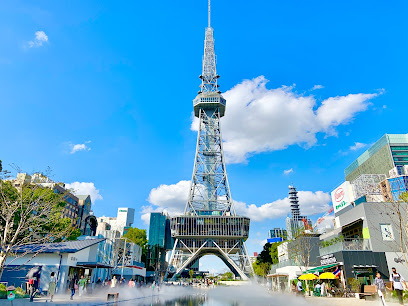
Tokugawa Park
Explore Tokugawa Park, a tranquil garden retreat in Nagoya, featuring stunning landscapes, koi ponds, and a rich cultural heritage.
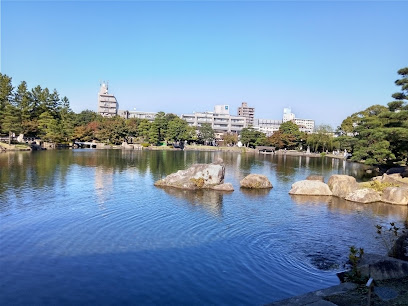
Honmaru Palace
Explore the majesty of Honmaru Palace in Nagoya, a historical landmark offering a serene glimpse into Japan's rich cultural heritage.
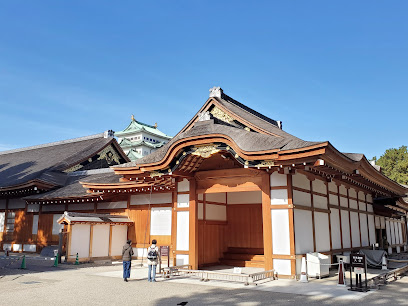
Nagoya City Museum
Explore the fascinating history of Nagoya at the Nagoya City Museum, a local history museum offering a deep dive into the city's rich cultural heritage.
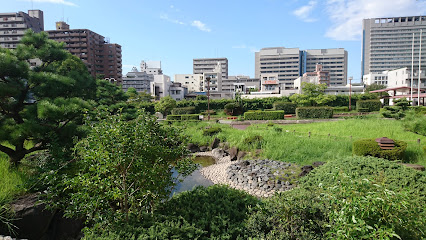
Higashiyama Sky Tower
Experience stunning 360-degree views of Nagoya from Higashiyama Sky Tower, a must-see observation deck and tourist attraction.
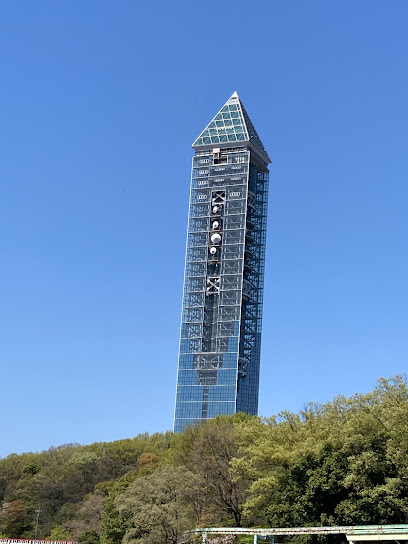
Kinshachi Yokocho
Experience the flavors of Nagoya at Kinshachi Yokocho, a lively food district near the historic Nagoya Castle, blending tradition and modernity.

Nagoya Port Building
Discover breathtaking views of Nagoya's skyline and port from the stunning observation deck of the Nagoya Port Building.
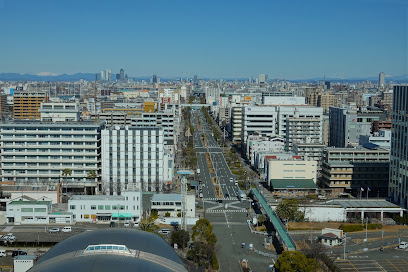
Nagoya Port Sea Train Land
Experience the excitement of Nagoya Port Sea Train Land, a unique amusement park blending train adventures and marine explorations for all ages.
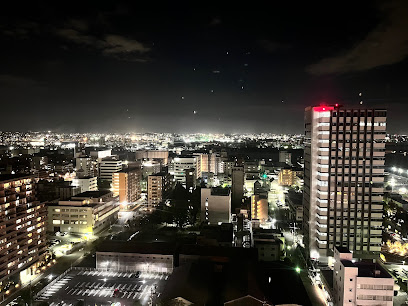
Spaceship-Aqua Observation Deck
Experience breathtaking views of Nagoya from the iconic Spaceship-Aqua Observation Deck, a must-visit for every traveler exploring this vibrant city.
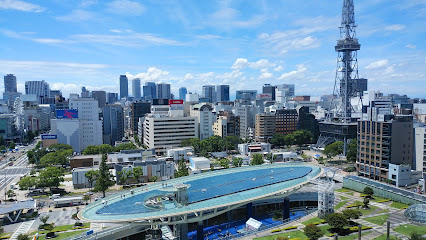
Essential places to dine
Misokatsu Yabaton (9F)
Savor the essence of Nagoya at Misokatsu Yabaton - where traditional meets deliciously modern miso cutlets.
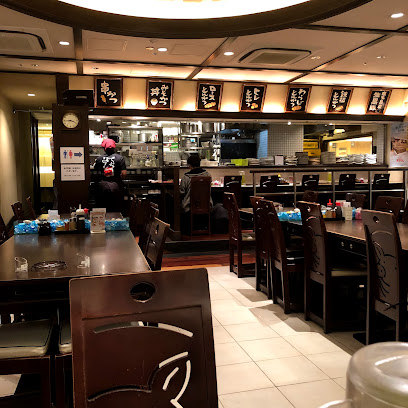
Maruya Honten - JR Nagoya Station store
Experience the rich flavors of Nagoya's culinary heritage at Maruya Honten - A premier destination for authentic unagi dishes.
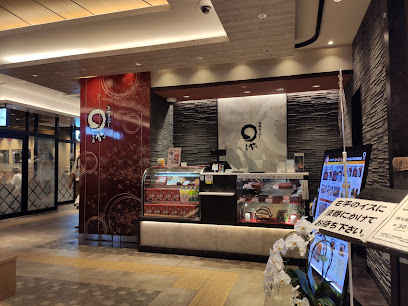
The Kawabun Nagoya
Discover authentic Italian cuisine at The Kawabun Nagoya - where exquisite flavors meet elegant dining in the heart of Japan.
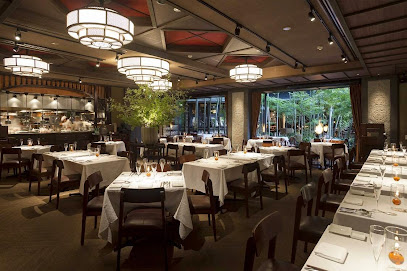
Maruhashokudo JR Nagoyaekiten
Discover fresh seafood delights at Maruhashokudo JR Nagoyaekiten in Nagoya Station - A must-visit for food lovers seeking authentic Japanese flavors.
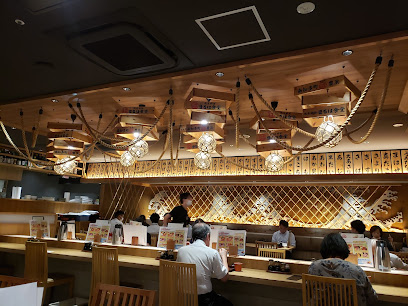
Midtown BBQ Nagoya
Discover authentic American barbecue at Midtown BBQ Nagoya - where flavor meets tradition in every bite!
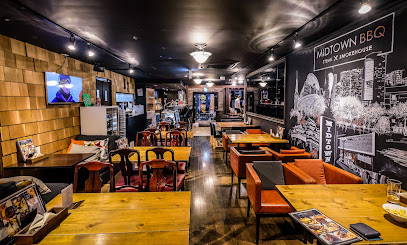
THE GATEHOUSE
Experience exquisite French cuisine at The Gatehouse in Nagoya, featuring breathtaking city views and a delightful atmosphere.

Hitsumabushi Uya Nagoya Station Shop
Experience authentic hitsumabushi at Hitsumabushi Uya near Nagoya Station—where tradition meets flavor in every bite.
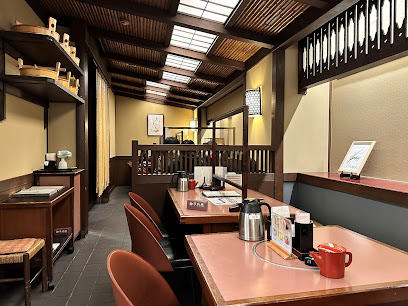
Rikyu Beef Tongue Restaurant Nagoya Station Gate Tower
Discover the exquisite taste of gyutan at Rikyu Beef Tongue Restaurant in Nagoya - a culinary experience like no other.
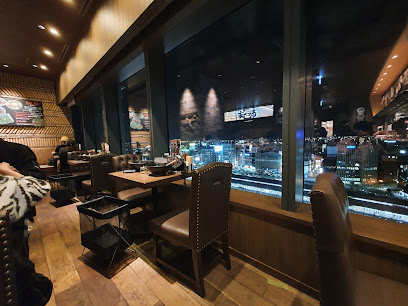
Meraki Kitchen
Experience an exquisite blend of Italian and French cuisine at Meraki Kitchen in Nagoya - where culinary artistry meets modern izakaya flair.
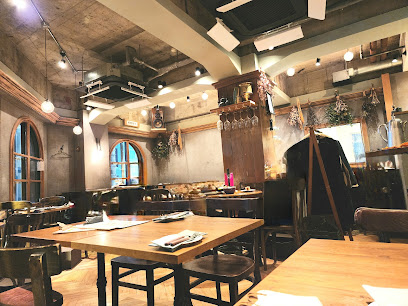
fummy's grill NAGOYA フミーズグリル名古屋
Discover Fummy's Grill Nagoya - where Californian cuisine meets Japanese hospitality amidst stunning city views.
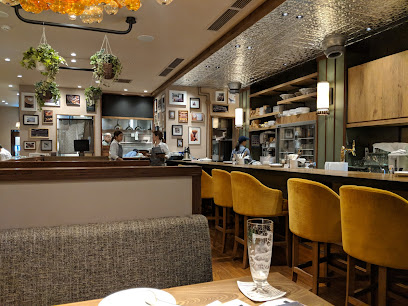
Markets, malls and hidden boutiques
JR Nagoya Takashimaya
Experience shopping like never before at JR Nagoya Takashimaya, where fashion meets tradition in the heart of Nagoya.
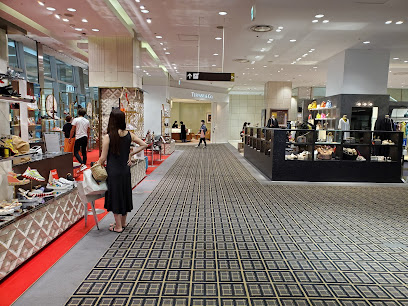
Esca underground shopping center
Experience the Esca Underground Shopping Center, a vibrant shopping haven in Nagoya with diverse shops and delightful dining options.
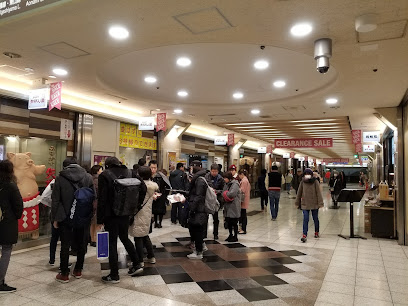
Nagoya PARCO
Explore the dynamic shopping scene of Nagoya PARCO, where fashion meets culture in a lively atmosphere filled with dining and entertainment options.
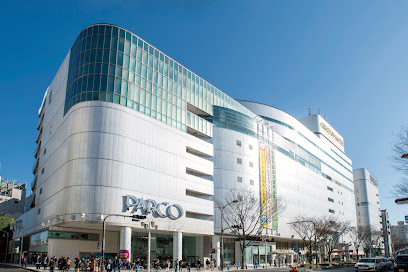
LACHIC
Explore LACHIC in Nagoya, a premier shopping mall offering an eclectic mix of fashion, dining, and entertainment experiences in a vibrant urban setting.
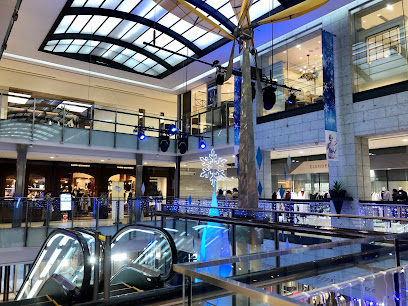
JP Tower Nagoya
Explore JP Tower Nagoya, a premier shopping destination offering a blend of retail, dining, and relaxation in the heart of the city.
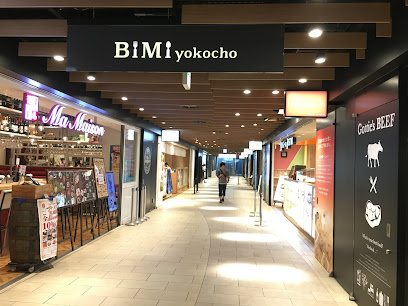
KITTE名古屋
Explore KITTE Nagoya, a premier shopping mall offering a mix of fashion, food, and local culture in the heart of Nagoya.
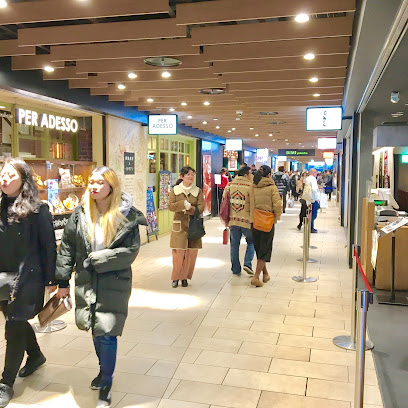
Animate Nagoya
Explore the vibrant world of anime and manga at Animate Nagoya, the ultimate destination for fans and collectors alike.
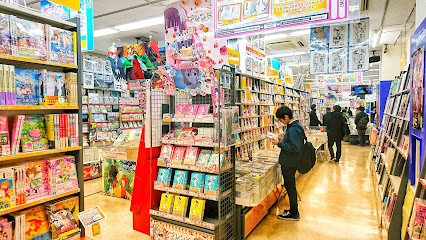
Grand Kiosk Nagoya
Discover a treasure trove of unique souvenirs and local delicacies at Grand Kiosk Nagoya, perfect for capturing the essence of your Japanese journey.
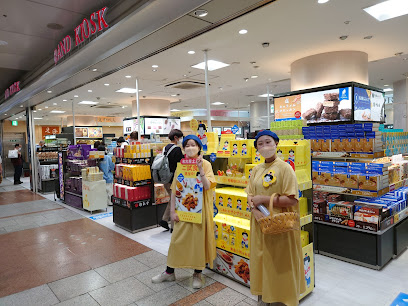
Nagoya Zero Gate
Explore the vibrant shopping scene at Nagoya Zero Gate, a multi-storied mall in Sakae offering diverse retail, dining, and entertainment experiences.
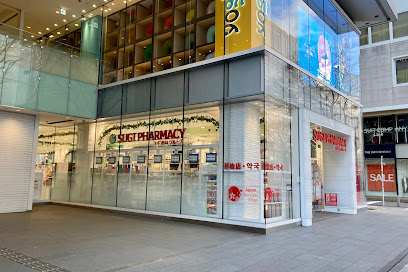
Honmaru Palace Museum Shop
Discover unique souvenirs and traditional crafts at Honmaru Palace Museum Shop in Nagoya. Capture the essence of Japan with every purchase.
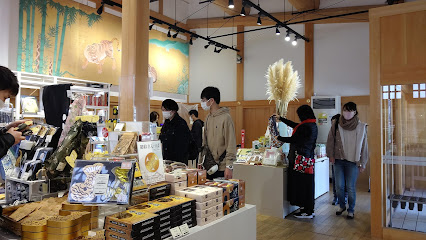
Essential bars & hidden hideouts
HUB Meieki
Discover the lively ambiance of HUB Meieki, a premier pub in Nagoya offering delicious fish and chips, a selection of beers, and a vibrant sports atmosphere.
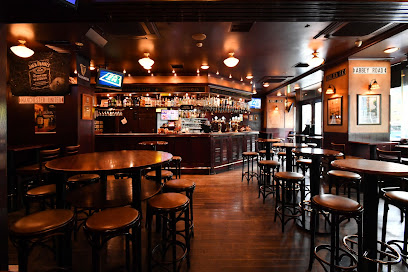
BAR BARNS
Experience the lively atmosphere and exquisite drinks at BAR BARNS, the perfect bar to unwind in Nagoya's vibrant Sakae district.
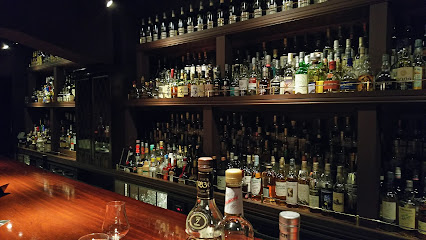
The Rock Aussie Sports Bar & Grill
Experience Australian cuisine and vibrant sports atmosphere at The Rock Aussie Sports Bar & Grill in Nagoya's Sakae district.
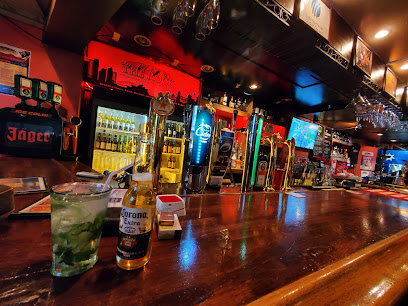
The 59's Sports Bar & Diner
Experience the bustling vibe of The 59's Sports Bar & Diner in Nagoya – where delicious food meets thrilling sports action.
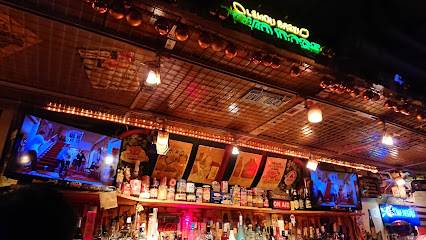
The One and Only
Experience the fusion of French cuisine and modern izakaya culture atop Nagoya's skyline at The One and Only.
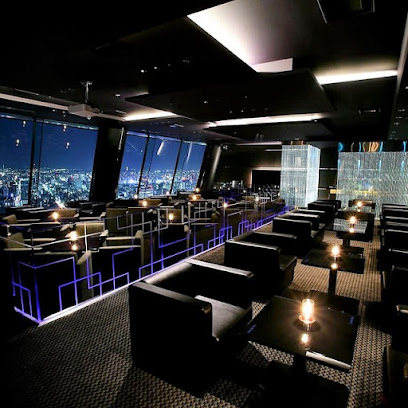
Bar Neat 名駅店
Experience the vibrant nightlife of Nagoya at Bar Neat, where stylish decor meets an extensive drink menu in a cozy atmosphere.

Irish Pub Celts
Discover the charm of Irish hospitality and Italian flavors at Celts Pub, a unique dining destination in the heart of Nagoya.
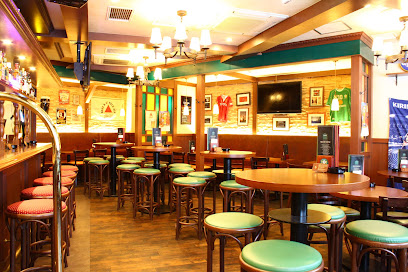
Nagoya Highball Bar
Experience the lively ambiance and exquisite highball cocktails at Nagoya Highball Bar, a must-visit for nightlife enthusiasts in Nagoya.
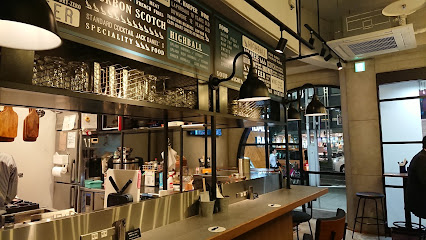
Bourbon Street
Discover the lively Bourbon Street in Nagoya, a vibrant bar and pub experience with great drinks, delicious takeout, and a thrilling sports atmosphere.
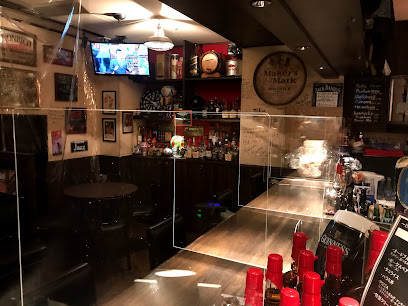
The Ancestor
Experience the vibrant nightlife of Nagoya at The Ancestor, a cozy bar serving exquisite drinks in an inviting atmosphere.
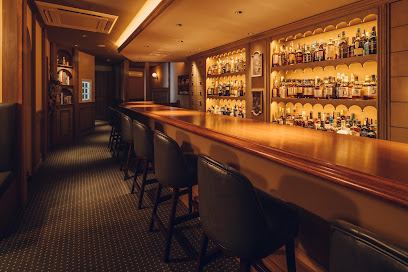
Local Phrases
-
- Helloこんにちは
[Kon'nichiwa] - Goodbyeさようなら
[Sayōnara] - Yesはい
[Hai] - Noいいえ
[Īe] - Please/You're welcomeどうぞ
[Dōzo] - Thank youありがとうございます
[Arigatō gozaimasu] - Excuse me/Sorryすみません
[Sumimasen] - How are you?お元気ですか?
[Ogenki desu ka?] - Fine. And you?元気です。あなたは?
[Genki desu. Anata wa?] - Do you speak English?英語を話せますか?
[Eigo o hanasemasu ka?] - I don't understandわかりません
[Wakarimasen]
- Helloこんにちは
-
- I'd like to see the menu, pleaseメニューを見せていただきたいです
[Menyū o misete itadakitai desu] - I don't eat meat私は肉を食べません
[Watashi wa niku o tabemasen] - Cheers!乾杯!
[Kanpai!] - I would like to pay, pleaseお会計をお願いします
[Okaikei o onegaishimasu]
- I'd like to see the menu, pleaseメニューを見せていただきたいです
-
- Help!助けて!
[Tasukete!] - Go away!去って!
[Satte!] - Call the Police!警察を呼んで!
[Keisatsu o yonde!] - Call a doctor!医者を呼んで!
[Isha o yonde!] - I'm lost道に迷いました
[Michi ni mayoimashita] - I'm ill具合が悪いです
[Guai ga warui desu]
- Help!助けて!
-
- I'd like to buy...買いたいです
[Kaitai desu] - I'm just looking見ているだけです
[Mite iru dake desu] - How much is it?いくらですか?
[Ikura desu ka?] - That's too expensiveそれは高すぎます
[Sore wa takasugimasu] - Can you lower the price?値引きしてもらえますか?
[Nebiki shite moraemasu ka?]
- I'd like to buy...買いたいです
-
- What time is it?今何時ですか?
[Ima nanji desu ka?] - It's one o'clock1時です
[Ichiji desu] - Half past (10)10時半です
[Jūji han desu] - Morning朝
[Asa] - Afternoon午後
[Gogo] - Evening夕方
[Yūgata] - Yesterday昨日
[Kinō] - Today今日
[Kyō] - Tomorrow明日
[Ashita] - 1一
[Ichi] - 2二
[Ni] - 3三
[San] - 4四
[Yon] - 5五
[Go] - 6六
[Roku] - 7七
[Nana] - 8八
[Hachi] - 9九
[Kyū] - 10十
[Jū]
- What time is it?今何時ですか?
-
- Where's a/the...?…はどこですか?
[… wa doko desu ka?] - What's the address?住所は何ですか?
[Jūsho wa nan desu ka?] - Can you show me (on the map)?地図で見せてもらえますか?
[Chizu de misete moraemasu ka?] - When's the next (bus)?次のバスはいつですか?
[Tsugi no basu wa itsu desu ka?] - A ticket (to ....)チケット(…まで)
[Chiketto (…made)]
- Where's a/the...?…はどこですか?
History of Nagoya Station Area
-
Nagoya Station, officially opened in 1886, was initially a modest wooden structure serving the burgeoning rail network that connected Nagoya to Tokyo and Osaka. As one of the first major rail stations in Japan, it played a crucial role in enhancing trade and travel in the region, setting the stage for Nagoya's growth as a commercial hub.
-
During World War II, Nagoya Station and much of the surrounding area were devastated by air raids in May 1945, which resulted in significant destruction. The station was rebuilt post-war, reflecting the resilience of Nagoya and its determination to restore its status as a key transportation and economic center in Japan.
-
The introduction of the Shinkansen (bullet train) in 1966 marked a new era for Nagoya Station. The station underwent extensive renovations and expansions to accommodate the high-speed rail service, transforming its architectural style and functionality. The current station complex, completed in 1999, is a striking blend of modern design and historical significance, with the world's largest railway station building.
-
Over the decades, the station area has evolved into a cultural and commercial epicenter, featuring numerous department stores, restaurants, and entertainment venues. The Nagoya City Science Museum and the Toyota Commemorative Museum of Industry and Technology are nearby, showcasing the region's rich industrial heritage and commitment to innovation.
-
In recent years, the Nagoya Station area has seen significant urban development, including the construction of skyscrapers and residential complexes that blend seamlessly with historical architecture. The area continues to attract visitors and residents, reflecting the dynamic evolution of Nagoya as a vibrant urban center in Japan.
Nagoya Station Area Essentials
-
The Nagoya Station Area is centrally located and easily accessible from various neighborhoods in Nagoya. It is served by the Tōkaidō Shinkansen, which connects it to major cities like Tokyo and Osaka. Local trains, including the JR Chūō Line, Meitetsu Line, and Kintetsu Line, also make stops at Nagoya Station. For those coming from the airport, the Chubu Centrair International Airport is approximately 40 minutes away by the Meitetsu Airport Limited Express. Buses and taxis are also available for direct access.
-
Navigating the Nagoya Station Area is convenient due to its extensive public transport network. The station itself is a hub for local trains, subways, and buses. The Nagoya City Subway offers two lines: the Higashiyama Line and the Sakura-dori Line, connecting you to various attractions. Bicycles are also a popular option, with rental services available nearby. Walking is a great way to explore the area, particularly the shopping and dining options surrounding the station.
-
The Nagoya Station Area is generally safe for tourists. However, like any urban area, it is important to remain vigilant, especially in crowded places. Petty crime such as pickpocketing can occur, particularly in busy shopping districts. It is advisable to avoid poorly lit streets at night and to be cautious around the station during late hours. While there are no specific areas with high crime rates targeting tourists, staying aware of your belongings is recommended.
-
In case of an emergency, dial 110 for police assistance and 119 for fire or medical emergencies. The Nagoya Station Area has several hospitals and clinics, with many staff members speaking basic English. It is advisable to have travel insurance that covers medical emergencies. For minor health issues, there are pharmacies within walking distance of the station where you can purchase over-the-counter medications.
-
Fashion: Do dress neatly and respectfully, especially in religious sites. Avoid overly casual clothing. Religion: Do respect local customs, especially in shrines and temples. Always bow slightly when entering. Public Transport: Do give up your seat for elderly and disabled passengers. Don't talk loudly or eat on public transport. Greetings: Do greet with a bow or a polite nod. A handshake may be acceptable but is less common. Eating & Drinking: Do try local foods and accept offers from locals graciously. Don't refuse food, as it may be seen as impolite.
-
To experience the Nagoya Station Area like a local, visit the underground shopping mall, known as the Meitetsu Department Store, for a taste of local cuisine and shopping. Explore the nearby Osu Kannon Temple and the vibrant Osu shopping district for a more authentic atmosphere. Engage with locals, who are often friendly and eager to share recommendations. Don't miss the seasonal events and festivals held at the Nagoya Station, which showcase local culture and food.
Trending Landmarks in Nagoya Station Area
-
Nagoya Castle
-
Chubu Electric Power MIRAI TOWER
-
Nagoya Station
-
Honmaru Palace
-
Kinshachi Yokocho
-
McDonald's JR Nagoya Station Branch
-
Nagoya Port Building
-
Kintetsu Nagoya Station
-
Meitetsu Nagoya Station
-
Toyoko Inn Nagoya Station Sakura-dori Entrance New Building
-
Sotetsu Fresa Inn Nagoya Station Shinkansen Entrance
-
@Nagoya Monument
-
At Nagoya Monument Oasis 21
-
Nagoya Station Tourist Information Center
-
@Nagoya Monument
Nearby Cities to Nagoya Station Area
-
Things To Do in Kyoto
-
Things To Do in Nara
-
Things To Do in Osaka
-
Things To Do in Kanazawa
-
Things To Do in Tokyo
-
Things To Do in Hiroshima
-
Things To Do in Fukuoka
-
Things To Do in Pohang
-
Things To Do in Ulsan
-
Things To Do in Gyeongju
-
Things To Do in Busan
-
Things To Do in Andong
-
Things To Do in Daegu
-
Things To Do in Suncheon
-
Things To Do in Daejeon









